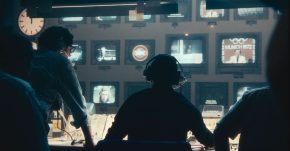7 October marked the start of the Liszt Fest – International Cultural Festival, a two-week-long series of diverse events at various venues across Budapest. You can choose from concerts, a new circus, contemporary opera, a visual arts conference, a photography fair, organ and jazz concerts and exhibitions, and a line-up of superstars: Plácido Domingo, who will introduce you to the great genre of Spanish musical theatre, the zarzuela, which dates back to the early Baroque period, while the closing concert on 22 October will feature the virtuoso Icelandic pianist, who has filled huge concert halls around the world, Víkingur Ólafsson will play Ravel’s thrilling and exciting Piano Concerto in G major with the Orchestre symphonique de Montréal, and the opening concert will feature the wonderful Sherry Williams, dubbed “the great lady of jazz”, as soloist.
The Liszt Fest International Cultural Festival was founded on the 210th anniversary of the birth of Franz Liszt. The varied programming, which is based exclusively on cultural programmes of exceptional quality, draws time and again on the immense wealth of the eponymous composer’s art, while providing scope for modern and innovative experiments, a wide variety of genres and arrangements. It will bring together under one umbrella the familiar, the classical, the familiar and the innovative, the questioning of the familiar and the disturbingly modern. Musical programmes will form the backbone of the event, but almost all other artistic disciplines will be represented.
“The outstanding quality, diversity of genres and richness of form that characterise Liszt’s oeuvre are fundamental to the Liszt Fest.”
The opening concert will reflect this mission: both the programme and the performers will guarantee an unquestionable quality and an innovative approach that draws on tradition. The Liszt Fest will be opened by the Modern Art Orchestra, founded by Kornél Fekete-Kovács, in St. Stephen’s Basilica on 7 October. They will be joined by the legendary American jazz singer Sherry Williams and the distinguished Hungarian soprano Lilla Horti, and will be accompanied by two world-renowned organists, András Gábor Virágh and Brian Charette from New York, conducted by Fekete-Kovács.
But how do Liszt’s music and jazz musicians come together? If the Modern Art Orchestra is the one to bring together these two worlds, which at first glance seem to be at odds, then there is no question that you are in for something truly exciting, meaningful and life-changing. This unusual big band, made up of some of the most influential figures in Hungarian jazz, is one of the most modern in its approach and has always been about pushing the boundaries of contemporary classical music and jazz. The ensemble has already proven its ability to say something new about the works of the great Hungarian composers with its arrangements of Bartók and Kodály, and to reinterpret the old classics in a modern way, always respecting the original work.
Liszt’s Via crucis does not seem an obvious choice for a contemporary reworking. Indeed, jazz and modernity are not exactly what immediately spring to mind when we think of sacred music depicting the Passion of Christ. However, Liszt himself made numerous revisions of the piece, originally composed between 1878 and 1879, and several different instrumental versions of it have survived – so he adopted an experimental, constantly innovative approach to his own work. And the story of Christ’s Passion is as timeless as it is universal: artists, writers, composers, in every age, find in it their own interpretations and the perspective from which they can explore it and say something new about one of the most fundamental stories of our common culture. Although the opening concert will feature jazz musicians and a solo performance by one of the greatest jazz singers of our time, jazz itself will take a back seat. This time, Fekete-Kovács has approached the piece without a jazz sound. After a careful study of all the Liszt arrangements, he decided to insert cadences between the individual sections. These extensions “reflect the movements as independent compositions”, the composer-conductor said in an interview with the magazine accompanying the Liszt Fest.
It is difficult to predict, or even to imagine, exactly how musicians from the world of classical music, jazz musicians and an unusual big band, always experimenting with innovative solutions, will perform together in St Stephen’s Basilica, reinterpreting a sacred work composed almost 150 years ago. But we dare to bet that audience members will be treated to something very special, a truly life-changing experience at the opening concert of the Liszt Fest.
!– wp:paragraph {“backgroundColor”:”light-green-cyan”} –>Article: Zsuzsanna Deák
Translation: Nóra Fehér



























Comments